|
Ever write a blog post that you are really proud of but you are in a place with lousy wifi and it just disappears into the ether along with a million other lost blog posts that were never published? That's where I am right now. In an airbnb in beautiful Marin sitting in an over upholstered chair that I keep slipping down from. So I'm going to try and rewrite that post as best I can, pausing every now and then to save and hoping that I don't get kicked off the Internet with an “Unable to Reach Server” notice. Imagine hearing a deep but silent Sigh. I had written about looking in my overabundant (read children’s book buying addict) library and discovering that most of my favorite books were concept books, i.e. books about concepts or ideas, and that I was especially fond of books that combined both concept and plot like Yuyi Morales’s Just a Minute, a counting book that features Grandma Beetle as a character who outsmarts death. I also looked at another favorite former student, Deborah Underwood’s, The Quiet Book, which doesn’t have a plot but is brilliant in so many other ways. Next I came upon Kathryn’s books Zero, One, and Two, which to an unsuspecting viewer might come across as simple numbers books until they open them up and start reading. These books are full of deep concepts. For example, Two is about friendship, betrayal, ostracism, alienation, bigotry, war, reconciliation and so much more, all told in brilliant rhythmic language with musical undertones and fabulous calligraphic illustrations that show numbers with individual personalities in non-anthropomorphic ways. Wild hey.  I was lucky enough to be Kathryn’s teacher way back when and I knew she had great things ahead of her. I was lucky enough to become her friend and keep that friendship over the years. And then I was lucky enough to watch her realize the fabulous potential that I'd seen. I came to Marin to attend her book launch for Two and it was so wonderful; a total love fest of kindred spirits. I saw four of my former students there, three of them now published. I saw the extraordinary Uyen Pham who, if all goes well, will be contributing to our upcoming Craft and Business of Illustrating Children’s Books course starting next week. I met this extraordinary woman who is an emotions consultant (not that she calls herself that) and Lissa Rovetch, who I’m hoping to convince to co-teach a humor course with us sometime. I also saw tons of beauty and creativity and hope and caring and humor from members of our community including SCBWI RAs, agents, editors, book distributors, emotion consultants, and kid’s book creatives. It made me feel all warm and fuzzy. As I was leaving, I realized Kathryn hadn’t even brought her new book out. She wanted this party, which wasn’t really a launch at all, or maybe it was on some other level, to be a coming together of community, of people who had been a part of her journey in some way and perhaps this explains a lot about who Kathryn is and how she could write a book like this with so much beauty and creativity and hope and caring and humor and in the end, community. I hope you love this book as much as I do. It has major read aloud re-readabily and works on different levels for all sorts of ages. If you can, do let us know in the comments what you think, and buy her book so that she can make more. Also, find out more about Kathryn and her books at http://www.kokidsbooks.com/ (though I hope that she updates the site soon to include Two and have purchase links). I also came across this interview where Kathryn shares more about herself and her journey http://www.hyphenmagazine.com/magazine/issue-20-insideout/one-kids-0
PS For some weird reason, I’m really looking forward to Four. I’m hoping he’s too square and needs to loosen up and get out of his box, though who knows where Kathryn will take it in this brilliant series. Any other number ideas?
39 Comments
You Won't Want to Miss!The Book With No Pictures by B.J. Novack(From Amazon) This innovative and wildly funny read-aloud by award-winning humorist/actor B.J. Novak will turn any reader into a comedian. You might think a book with no pictures seems boring and serious. Except . . . here’s how books work. Everything written on the page has to be said by the person reading it aloud. Even if the words say . . . BLORK. Or BLUURF. Even if the words are a preposterous song about eating ants for breakfast, or just a list of astonishingly goofy sounds like BLAGGITY BLAGGITY and GLIBBITY GLOBBITY. Cleverly irreverent and irresistibly silly, The Book with No Pictures is one that kids will beg to hear again and again. (And parents will be happy to oblige.) This book just at my dog! by Richard Byrne(From Amazon) When her dog disappears into the gutter of the book, Bella calls for help. But when the helpers disappear too, Bella realizes it will take more than a tug on the leash to put things right. Cleverly using the physicality of the book, This book just ate my dog! is inventive, ingenious, and just pure kid-friendly fun! The Cat, the Dog, Little Red, the Exploding Eggs, the Wolf, and Grandma by Diane Fox(From Amazon)
A comical twist on "Little Red Riding Hood" told by Cat and Dog! Cat starts reading "Little Red Riding Hood" and explains, "It's a story about a little girl who always wears a red cape with a hood." Dog says, "COOL! I love stories about superheroes. What's her special power?" Cat says, "She doesn't have any special powers. It's not that kind of a story." And then the fun ensues! The zany, fun back-and-forth of Dog and Cat celebrates the joy of reading -- and questioning. Young children will cheer Dog's persistent questions as well as Cat's dedication to keep telling the story. I know, I know, it doesn't have the alliteration but Mondays with Mandy will be happening tomorrow on Tuesday. Every now and then life kicks you in the kischkas and you just can't get it together. Your hubby goes away for a few days and suddenly the baby stops sleeping at night, which means you stop sleeping. Your Title 1 at risk school is also a big source of stress and today you are getting observed. Unfortunately you're covered in dog hair and baby vomit and your look is not quite gonna cut it. Welcome to Mandy's day.
She'll be back tomorrow. ~ Love Mira  From Mira: Last week, I had the good fortune to meet Anne Boles Levy, co-founder of the Cybils Awards at the KidLit Con conference here in sunny Sacramento. KidLit Con is a conference for children's book bloggers and it was really cool and very inspiring on many levels. I'll definitely be doing my best to attend next year and if I can I'll also seriously be considering if I can be one of the judges for next years Cybils (the judging applications happen in August). I was excited to attend the conference because of the focus on diversity and because some of my mates were going to be there. And then I met all these cool people there including Anne. So I decided to aks for an interview (as many good bloggers do). Here goes: Anne, while it's clear that aspiring authors and illustrators need to participate in social media to help build their author illustrator platforms, what happens after you get published? As most new authors quickly discover, you're left to your own devices for publicity, whether you're self-published or not. How do you get yourself and your book out there to be seen and read and discovered? The Cybils Awards can't be the main part of your publicity plans, but there are things we can do to help. First, check out our lists of judges. We recruit book bloggers to come and judge our contest every fall, but the rest of the year, they're reading books and writing about them. Rummage around Cybils.com and you'll find our rosters by age range and genre. If you wrote a picture book, for example, there is a list of bloggers who review or write about them -- and it includes each person's blog and twitter handle. Most have their review guidelines and contact info posted on their blogs. The rest is up to you. Second, our nomination season is open right now, this second. We take nominations from the public from Oct. 1-15 every year, followed by a one-week grace period for authors to nominate themselves. If your book came out this year, consider nominating yourself after Oct. 15. Note that not all genres take self-published books -- double check to make sure. What are the kinds of books that rise to the surface in book awards? I can't speak for other awards, but at Cybils, we look for both literary merit and "kid appeal". What does that even mean? Well, it should first and foremost be a story that children will grab off a shelf and love to death, or something a teen would read, unprompted, again and again. Such stories usually begin and end with characters that are richly described, three-dimensional, and jump off the page and into a reader's heart. The plot has to feel organic to the character's growth, and we strongly favor theme over subtext. What's the difference? After all, aren't both about central lessons and universal truths? Think of theme as a gentle current that doesn't hinder the course of the story, but is forever gliding just beneath the surface, waiting for you to dive a little deeper in to explore. It's implied, not explicit. Subtext is a hammer, a not-so-hidden agenda that bludgeons you with An Important Lesson. So-called message books really rub us the wrong way. Parents of young kids don't need you to second-guess how they're raising them, and teens can spot a lecture in any form -- and so can our judges. Leave the sermons in church, pretty please! There are other things we look for too, such as whether art and story in picture books and graphic novels work harmoniously together, and if the story is something we haven't seen 1,000 times before. How did you come to found the Cybils? Well, like many great innovations, it happened by accident. A blogger friend complained about how some awards were very snooty and kids would never actually read the winners. Meanwhile, other awards were based solely on popular vote or sales, neither of which seemed a guarantor of quality. I joked in a comment we should start our own awards and combine both ideas -- merit and popularity. Within hours, my email was full with people wanting to volunteer, and within days, we had a name, a blog, and the first judges and book nominations. That was in 2006, and we keep coming back every year for more. I do feel that it's still the most accessible book awards and also the most transparent. Our nominations are open to the public, we publicize judges' names in advance, we list our criteria, we post reviews of nominated books as the season progresses, and we post the final count of how many books actually got read versus how many were nominated. It's typically around 98 or 99 percent, with only a small number of self-published books going unread if we can't obtain a copy. Plus, we're nice, and we love books and kids, and we like hearing from folks who feel the same way. Why is it so important to nominate diverse books? I'm going to take a different tack than you may have heard or read before. Imagine going into a grocery store and there is only white bread and mayonnaise for sale. That's it! Everybody's on the white bread/mayo diet. You go to the manager to say you want bagels and lox, and he tells you that not as many people buy that. Most people like white bread and mayo, so that's what he's offering. Don't like it? Go bake your own. That's kind of what’s happening in book publishing right now. Hundreds of thousands of people joined the #WeNeedDiverseBooks campaign, indicating a massive, untapped market for such books. But the reply has been "such books don't sell." Since when is the free market been solely driven by the supply side of the equation? There is a demand, and let's keep demanding. We can show publishers that there is a profit to be made, and a good way to do that is to showcase diverse books that can compete in a major literary awards and win. Thank you Anne Boles Levy. I can see how participating can be super helpful for our community and society at large as well as for those who are building their author/illustrator social media platforms. You can find out more about the Cybils Awards right here http://www.cybils.com/ Book nominations are happening right now, so if there are any books that you believe in, please nominate them now. http://www.cybils.com/ Mira Reisberg is the Director and founding instructor of the Children's Book Academy. She has been involved in the children's book industry since early 1988 illustrating and contributing writing to some of the first multicultural children's picture books. Over the years she has taught many now successful children's book writers and illustrators. Starting November 3rd, she will be co-teaching the Craft and Business of Illustrating Children's Books with Chronicle Books' Design Director and Art Director extraordinaire for fearful beginning artists, multi-published illustrators, and adventurous writers. For more information, click here. Meet Kristine below.
But also, I come across books and think I will definitely need this someday, just not right now. But I’m an instant gratification kind of girl, so I buy it right then so when I need it I won’t have to wait for it.
It really is a book of questions. So if you are searching for an extensive “get to know your character questionnaire” this book is for you. However, by going through, I’ve realized it is a goldmine for brainstorming or discovering a new character (for anything) but especially picture books! This idea that agents and editors want “character driven” picture books is huge! And here is an opportunity to point you in the “write” direction. The Book has 14 chapters and they are all a series of questions. 1. What Are the Character’s Internal Traits? 2. What Are the Character’s External Traits? 3. What Does the Character Want, Not Want, or Need? 4. What Does the Character Like or Dislike? 5. What Does the Character Fear? 6. What Does the Character Believe? 7. What Are the Character’s Strengths, Weaknesses, and Habits? 8. What Is the Character’s Background? 9. What Is the Character’s Self-Assessment? 10. What Is the Character’s “Type”? 11. Does the Character Have a Nickname? 12. What Is the Character’s Job? 13. Will the Character Face a Nonhuman Adversary? 14. What Plot Drivers Will Affect the Character? And each chapter continues as a series of questions, giving you options to consider. For example, in the first chapter Internal Traits, he lists traits and under each one gives you related traits and Character Possibilities for that trait. For the trait TIMID some examples he gives for Character Possibilities are: Trembles at the thought of trouble. A cataloguer of exits. A collector of misgivings. He’s giving you ACTION for your character! Something essential! So even though a “timid” person may seem passive, he still needs to be “active” in his timid ways. For the External Traits Chapter he gives you examples of how other characters will view your character based on those traits. For example: UNSOCIABLE *Doesn’t care much for chit chatting. *His “hellos” when he has any are like icebergs. *Has forgotten how to smile. *He’s a slam the door in your face kind of person. *Has a bad case of the grims. (Doesn’t that just sound like a character driven picture book?) And we all know a Character must Want or Need something…so he devotes and entire chapter to asking you questions about what your character wants. This chapter is broken down into those wants or needs such as: courage, equality, affection etc… But then he asks specific questions about each one. AFFECTION: What kind of affection does the character want or need? Friendship? Public Adoration? Has he previously been denied it? Did he have it and lose it? Where does he think his chances for affection lie, and is he right? And what will happen if he doesn’t get it? Doesn’t want: unfriendliness, solitude (His questions are helping you build character, but also helping you build your plot.) I love the chapter on What Is Your Character’s Type: He categorizes them into such categories as: The Chatterbox The Grouch The Hard Head The Go-Getter And then the last two chapters are about obstacles and conflicts that character will face. He gives types of obstacles and then again asks questions to get you thinking. Some examples of Plot Drivers are: Arrival Change Debt Disagreement Theft And many more. And he asks question after question in relation to these plot drivers to get you thinking…. For example: ARRIVAL Is the arrival a surprise? A welcome visit? Something that has long been dreaded? For the character who is arriving, is it a homecoming, a visit, a chance to gain a sanctuary, an opportunity to get a new start? Does the arrival appear in the form of a ghost? How does the arrival of someone alter the course of the plot? How are the others affected? There is just so much in this book to love! And I can see using it to brainstorm character driven picture books. Spend time sifting through this book and try adding a few chapters together by saying What If? What if this UnSocial Grouch got an Arrival from a Chatterbox? What if this Timid Nobody wants Public Adoration? What if this Peacemaker causes a Disagreement? I’m very excited about using this book, especially for my favorite time of the year: PIBOIDMO Picture Book Idea Month coming up in November!
|
We are so excited to be mixing things up at CBA, beginning with some delicious additions to the Blogfish. Meet our awesome bloggers!!
Here's our lineup: 1st Mondays begin with former school psychologist Dr. Debra Collins who will be writing about Social emotional Learning in kidlit and behind the scenes as well as Jewish children's books. 2nd Mondays will feature super smart Melissa Stoller whose career is taking off with several new books. 3rd Mondays will feature our new blogger coming soon. 4th Mondays features new blogger, the fabulous Brentom Jackson, who has a beautiful approach to blogging. And 5th Mondays we'll be taking a break Archives
July 2024
|
|
Discover
|
About Us
|
Join Us
Join our Community and receive a fabulous free gift, KidLit tips, newsletters, scholarship info, contests, and more!
Join our KidLit Mentorship |
Social Media
Interact with our FaceBook Group or follow us on:
|
© 2010-2024 All content on this website is copyrighted. Sorry, all courses are non-refundable.
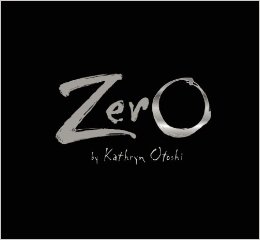
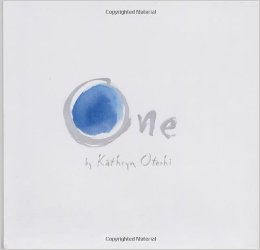
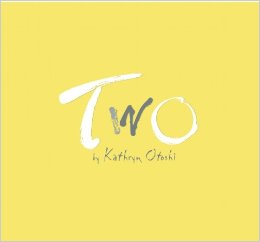
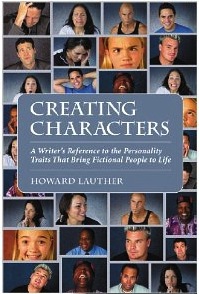
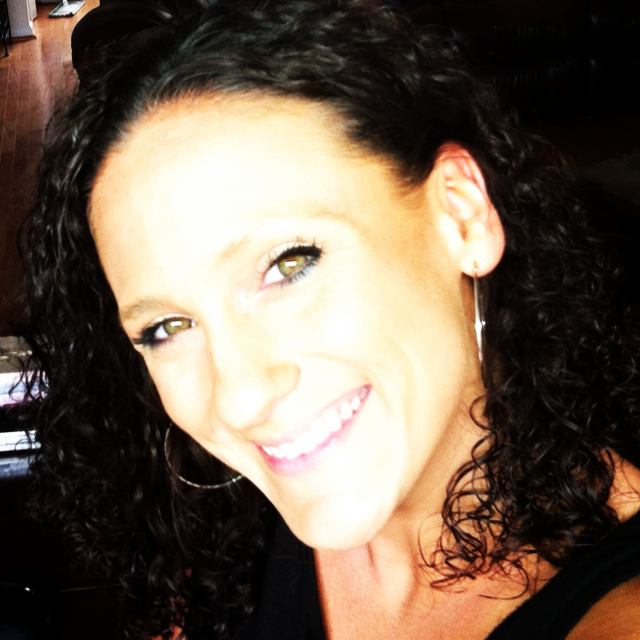
 RSS Feed
RSS Feed
